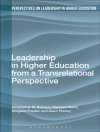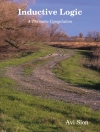On March 11, 2011, an underwater earthquake off the Pacific coast of Tohoku, Japan, triggered one of the most devastating tsunamis of a generation. The aftermath was overwhelming: communities were reduced to rubble, thousands of people were missing or dead, and relief organizations struggled to reach affected areas to provide aid for survivors and victims of radiation from compromised nuclear reactors.
In Japan after 3/11, editors Pradyumna P. Karan and Unryu Suganuma assemble geographers, economists, humanists, and scientists to consider the complex economic, physical, and social impacts of this heartbreaking disaster. Historical geographers place the events of March 2011 in context, while other contributors assess the damage and recommend strategies for the long process of reclamation and rebuilding. The book also includes interviews with victims that explore the social implications of radioactive contamination and invite comparisons to the discrimination faced by survivors of the Hiroshima and Nagasaki bombings. Balancing the natural and social sciences, this timely volume offers not only a model of interdisciplinary research for scholars but also an invaluable guide to the planning and implementation of reconstruction.
表中的内容
List of Figures
Preface
Remarks by the Honorable Itsunori Onodera, Member of the Japanese House of Representatives from Kesennuma, Miyagi Prefecture
Introduction: After the Triple Disaster: Landscape of Devastation, Despair, Hope, and Resilience
Part 1: Earthquake and Tsunami Damage
1. Historical Geography of the Japanese Tsunami
2. Facing the 3/11 Waves
3. Tsunamis and Earthquakes in Japanese Literature
4. Tsunami Flow and Geo-Environment of the Pacific Coastal Region of Tohoku
5. Tsunami Damage and the Road to Recovery in Onagawa Town
6. Earthquake and Tsunami in Taro Town
7. The Cases of Two Tsunami Storytellers Who Experienced Tsunami Disasters Twice in Their Lifetimes
8. Agricultural Damage in the Sendai Plain and the Road to Recovery
Part 2: Nuclear Radiation Crisis: Living with Radiation
9. Ramifications of the Fukushima Nuclear Disaster: Toward the End of the ‘Peaceful Atom’?
10. TEPCO and Nuclear Energy Politics: An Analysis of the ‘Japanese Pentagon’
11. Characteristics of the Evacuation Area and the Spatial Distribution of Radioactive Pollution in Fukushima Prefecture
12. The Social Structures of Victimization of Fukushima Residents Due to Radioactive Contamination from the 2011 Nuclear Disaster
13. Internet-Age Parents and Children after the 2011 Earthquake and Tsunami
14. Crisis Mapping Project and Counter-Mapping by Neo-Geographers
Part 3: Impact of the Earthquake and Tsunami on Business and Industry
15. The Impact of the 2011 Tsunami and Earthquake on Distribution Systems in the Tohoku Region
16. The Impact of the Earthquake, Tsunami, and Nuclear Radiation on the Manufacturing Industry in the Tohoku Region
Part 4: Socioeconomic Dimensions of Response, Recovery, and Reconstruction: The Rebuilding Dilemma
17. Disaster Prevention Culture: Role of Schools in Saving Tsunami Victims
18. The Role of Volunteering in Post-Tsunami Town Recovery: The Experience of All Hands in Ofunato City, Iwate
19. Distributiion of Non-Japanese Residents and Support Activities for Them in the 2011 Earthquake and Tsunami Disaster-Stricken Areas
20. Coordinating Policy Toward Fiscal Preparedness for Natural Disasters: A Post-2011 Earthquake and Tsunami Perspective
Part 5: Comparitive Responses to the Disaster: Japan, China, India, and New Zealand
21. Experiencing Disasters in Two Places: China’s 1976 Tangshan Earthquake and Japan’s 2011 Earthquake, Tsunami, and Nuclear Radiation
22. Liquefaction in the 2011 Earthquake in Japan and the Christchurch, New Zealand, Earthquake: Responses and Challenges to Reconstruction
23. Tamil Nadu and Tohoku: The Two Tsunamis
Acknowledgments
List of Contributors
Index
关于作者
Unryu Suganuma is associate professor of geography at J. F. Oberlin University in Tokyo. He is the author of Sovereign Rights and Territorial Space in Sino-Japanese Relations and coeditor of Local Environmental Movements: A Comparative Study of the United States and Japan.












